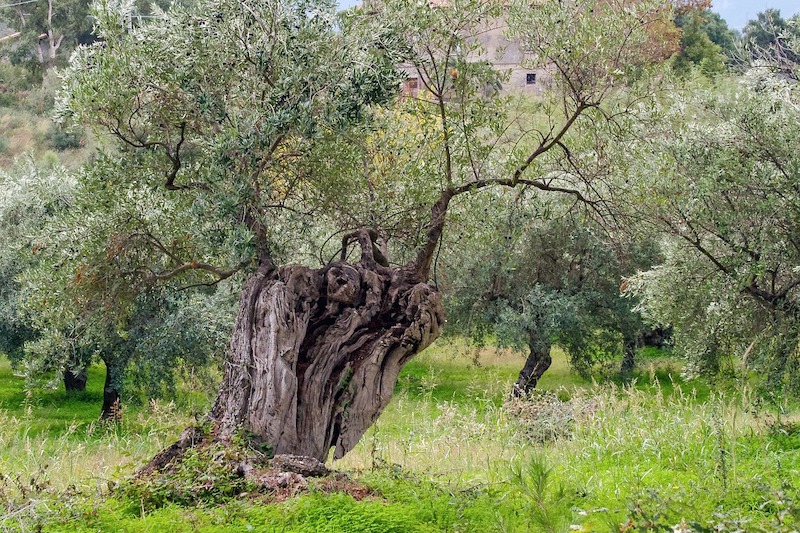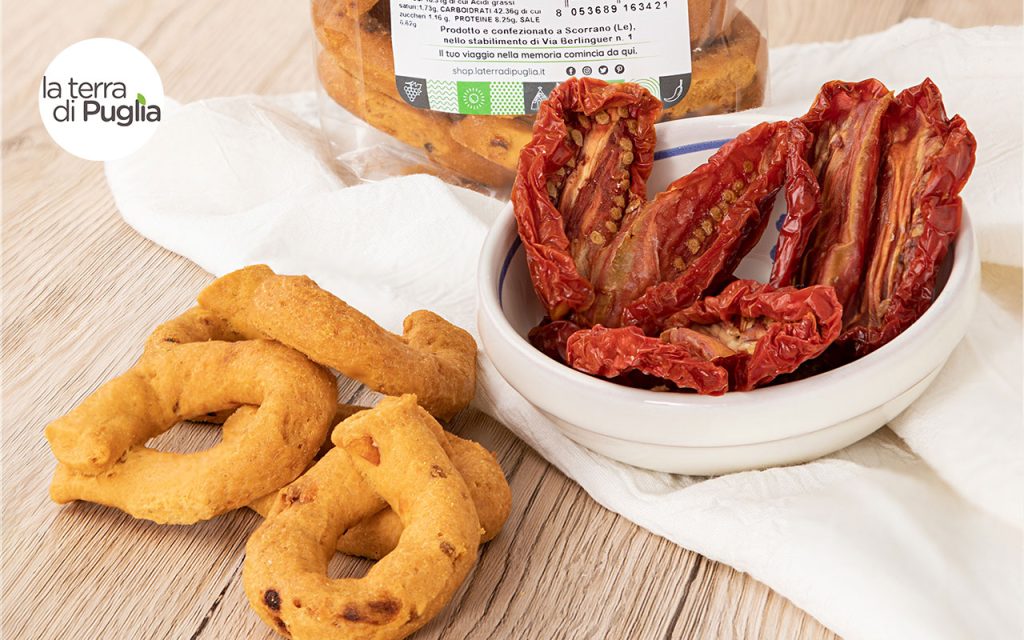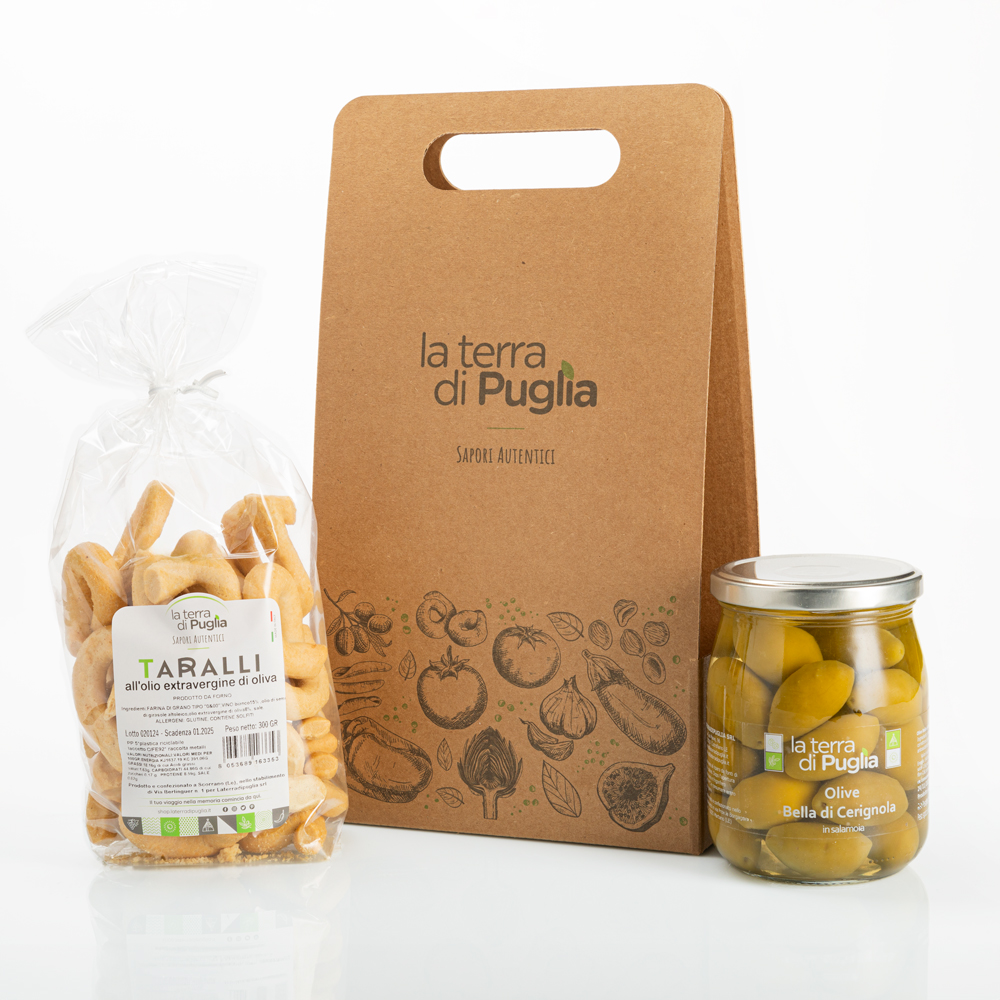WHAT DOES EXTRA-VIRGIN OLIVE OIL MEAN ?

It is defined as extra-virgin olive oil the one obtained from the first pressing of olives through mechanical processes, so without resorting to chemical ways or substancies in conditions that cannot alter oil whose free acidity, expressed by the oleic acid, is not larger than 1%.
Only good olives are used, of first class, picked and pressed, which have been only washed and separated from leaves.
Prodotti correlati Shop Laterradipuglia
The juice has been extracted from them and filtered.
WHAT CAUSE ACIDITY?

Acidity indicates the percentage of oleic acid in the oil and it is the most important sign of the quality.
The more it is high, the less the oil is good. The acidity, expressed as oleic acid, increases even for the negligence in the phases of production, that is overripe olives, too long intervals between the pick and the manifacture of the olives, not much care during the working.
Acidity cannot be noticed in tasting the oil but it can be defined only through a chemical analysis.
It must not be confused with the slight itch that reveals, instead, a low acidity and a recent pressing of the olives.
HOW CAN WE OBTAIN THE MARKETED PRODUCT WITH THE DENOMINATION OLIVE OIL?

The marketed product with the denomination olive oil can have a percentage of acidity of 1.59 and it can be obtained making refined olive oil with edible virgin olive oils.
The refined olive oil, on its turn, is the so-called virgin olive oil ?lampante? which, because of faults and serious alterations (as acidity higher than 3.19%) cannot be eaten needs of an industrial process of deacidification, deodorizing, and decolouring, becoming in this way a neutral product both in taste and in colour.
The addition of a percentage of virgin olive oil gives him a bit flawour and taste and it is sold as olive oil.
A curiosity: olive oil ?lampante? is very dark and has an unpleasant flavour. In the past it was used to feed oil lamps.
HOW CAN WE OBTAIN OLIO DI SANSA DI OLIVA?
The virgin sansa, that is the solid product of pressed olives, has got a certain quantity of oil (from 2 to 4% per 100 kg of sansa).
In order to use this product, which cannot be extracted with mechanical processes, there are sansifici, places where the product is extracted through a way like the one used for the production of oil of seeds based on the use of solvents.
Naturally, the obtained oil can be refined and corrected, through the processes used for doing olive oil.
Mixing the refined oil of sansa, with a percentage of refined olive oil and keeping the level of acidity within the percentage of 1.5%, we have olive oil of sansa.
ON WHAT DOES THE QUALITY OF AN EXTRAVIRGIN OLIVE OIL DEPEND?
The quality of an extra-virgin olive oil depends on many factors.
The variety of the oil is very important, the n the area of production, and at least the climate and the chemical composition of the soil, aspects which modify the taste and the scents of the oil.
All the merits and the faults depend, furthermore, on different factors like: level of maturation of the olives, technology of pick, time and place of conservation of the olives, technology of extraction, conservation of the oil, general hygiene and cleanness time and simple rules of conservation.
WHICH IS THE BEST METHOD OF PICK OLIVES?
Olives have to been done picked at the right time of maturation. We have to keep their colour pick olives when their superficial colouring is partial or has just been terminated: their oil will be of the best quality and rich in healthy components; it will have the less level of acidity and a very high and pleasant scent.
The best system of pick olives is browsing (pick by hands from the tree) which allow us to pick the fruit at the level of maturation we want, in the best conditions, intact without any contact with the soil.
Another good system is the one with a mechanical shaker, while pick from the soil has to be avoided.
The formula that let us have a good extra- virgin olive oil is always the same: healthy olives picked from the trees and pressed in a very short period of time.
WHICH ARE THE PHASES OF PRODUCTION OF THE EXTRA-VIRGIN OLIVE OIL?
As we finish the pick, which has to be in the right way, olives should be taken to the olive press with the right caution.
Before going on with the real extraction, olives are separated from the leaves then they are washed in order to eliminate remainder, vegetables, and mineral impurities.
After that, olives are subjected to a process that reduces the skin, the pulp and the stone in cream.
Then we have gramolatura, a continuous and delicate remix of the cream which gives rise to the humidification of the oil?s molecules in order to separate better the oil from the water.
We use 2 methods for the real extraction: pressing or centrifuge. They separate the three components of the cream: water, sansa and oil.
HOW MANY OLIVES WE NEED FOR THE EXTRA-VIRGIN OLIVE OIL?
The extra-virgin obtained from the pressing of the olives, thanks to the highest care in every phase of the pressing, is for this reason a very expensive product.
For example, the conditions in which the pressing happens influence the yeed of the olives on one hand and the quality of the oil on the other.
The best temperature, during the pressing, should be, more or less, 28° C: increasing it would let us have a higher percentage of oil extracted but risking a low quality of the product.
- HOW LONG DOES THE EXTRA- VIRGIN OLIVE OIL LAST?
It?s a good habit to use this kind of oil during the same year of production, if it can be generally eaten till 20 months from the pressing.
The extra-virgin olive oil has got natural unoxidized substancies, as phenolic compounds and tocoferoli, which protect it by going rancid but as times foes on their action is less stronger or can be nullified if some rules are not respected.
First of all, oil should be kept in dry and cool places, in rooms where the temperature ranges are not high: it should be kept far from the direct light, air and warmth.
Contrary to someone could think, cold doesn?t alter the chemical structure of the product and its good preservation.
WHAT COLOUR IS A GOOD EXTRAVIRGIN OLIVE OIL?
The colour of a good extra-virgin olive oil can have very different gradations, from the shiny green to intense gold.
Anyway, the colour is not a proof of the quality of the oil.
The variety of the olives determines most the colour, the level of maturation and a high presence of clorophylls and carotene in them.
We can have oil of a shiny green colour and a light delicate and taste and on the other hand, yellow oils with an intense taste while the bright orange and red tones are always associated with the oxidative degradation.
WHAT DOES FRUITY MEAN?
The first distinctive sign of a good quality extra-virgin olive oil is fruity that is the scent which remembers us the fruit, the same we have pressing an olive with the fingers.
Further the fruity, others softening of the taste are characteristics of an extra-virgin olive oil, depending on the variety of the olive, of their grade of maturation, and the geographical area of production.
The oil produced by unripe olives just picked has a chilly and slightly bitter taste, others made of more mature fruit has a sweet taste, more delicate.
Then are, then, more particular softening of taste like the ones of artichokes, apple, almond, tomato, celery, herbaceous taste?
In order to give more value to these flavours, it is a good habit to use them with the right dishes: sweet oil on delicate salads (lettuce, invidia), grilled or boiled fishes, whose taste must not be covered; fruity oils on bitter salads (radicchio, racket, pinzimonio), tomato sauce and fried food; very fruity oils on vegetables with a strong taste (artichokes) and pulses etc. etc.
WHAT GUARANTEES THE DOP MARK?
The DOP mark- denomination of protected origin- guarantees the original area of an extra-virgin olive oil.
The extra-virgin ones in fact are not all the same: characteristics tastes and scents vary on the regions of origin.
The denomination of protected origin is the instrument of guardianship of these features and of orientation for the customer and it is given only to the extra-virgin olive oil produced in the respect of the tradition of their own original area.



















